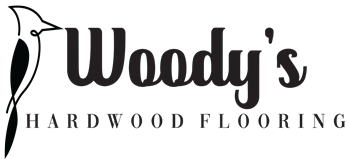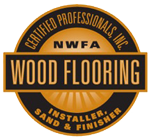Q: How long has Woody’s Hardwood Flooring been in business?
A: Woody’s Hardwood Flooring was founded in 1996.
Q: How does Woody’s Hardwood Flooring sand and refinish hardwood floors without the dust?
A: A trailer with a large gas powered vacuum is parked in front of your home. Hoses from the vacuum are run into the home and attached to the sanding machines. When sand all dust in contained in the trailer.
Q: How to stop a solid hardwood floor from gapping?
A: Gapping in solid wood floors cannot be stopped completely. Wood expands and contracts with changes in humidity. Using a humidifier during the heating months may help reduce the amount of gapping in solid wood floors. Also, some wood species may gap expand and contract less than others. Engineered wood floors are much more dimensionally stable than solid wood floors and will show little or no gaps between planks.
Q: Can I use throw rugs on my hardwood floor?
A: All rugs should be non-staining, meaning the colored dyes will not bleed (check with rug manufacture). Generally in the presence of moisture, some dyes used in rugs may bleed through onto your floor and discolor the wood floors surface. Clean dirt and debris from under the rug regularly. To prevent possible shading of the wood underneath the rug, move the rug occasionally.
Q: What should I use under furniture legs?
A: Use felt pads. Some pads just stick on the bottom of the legs and others need to be nailed on. Check and clean the pads often to prevent debris and dirt from being trapped in the pad, which may cause scratches in the wood floor’s finish.
Q: Does wood flooring promote a healthy indoor environment?
A: Yes! Bacteria, dust and dirt do not embed themselves in wood flooring, as they do in other flooring options. Simple regular maintenance – such as dust mopping, sweeping, or vacuuming – keeps wood floors sanitary.
Q: Is the natural environment protected during the harvesting for wood flooring?
A: Yes. Far from a depleting resource, hardwood is sustainable and commercially more available now than ever before. On the 486 million acres of forestland in the United States, substantially more wood is added annually then is removed through harvest.
Q: Once installed, how often must wood flooring be replaced?
A: Every hundred years or longer, wood flooring is an investment in a permanent flooring. Instead of laying an entirely new floor when the original is worn, wood floors can be rejuvenated with sanding and refinishing.

